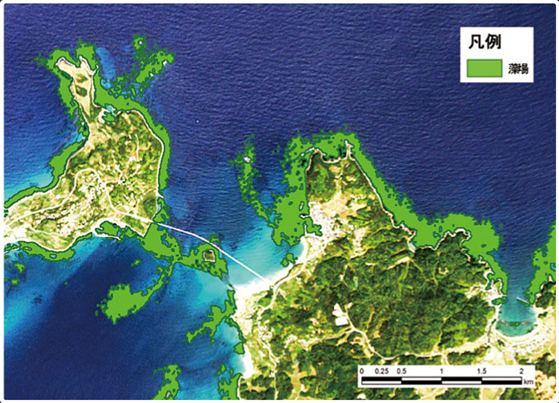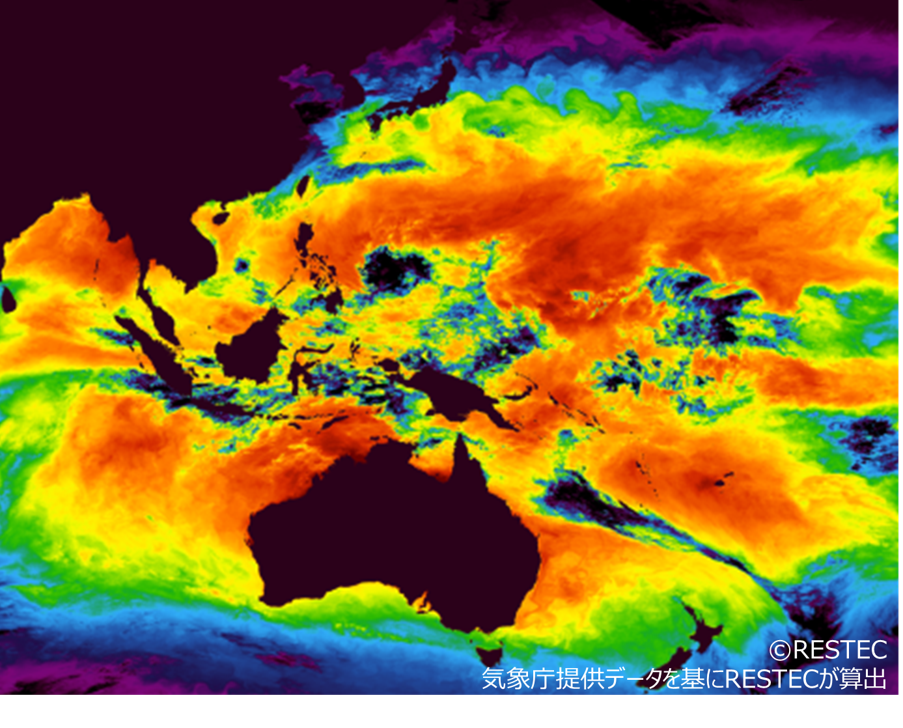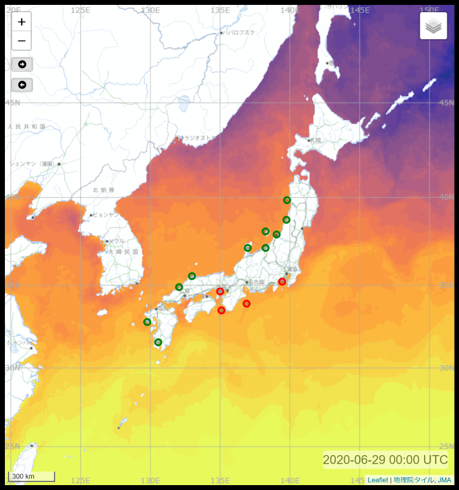Ocean
The earth is a water planet with about 70% of its surface covered in water. It is becoming increasingly important for Japan, a maritime nation, to grasp the conditions at sea from the perspectives of safeguarding its fishing industry, physical distribution routes, and remote islands as well as tackling environmental issues. Earth observation satellites are outstanding tools that enable extensive, detailed, and regular surveying of the vast oceans.
Halting the Decline of Seaweed and Seagrass Beds
-
Areas where seaweeds and seagrasses grow in great density are known as underwater forests, and they play an important role as feeding, spawning and nursery grounds for many marine organisms. However, it has been reported that seaweed and seagrass beds are in decline throughout the world, including Japan, due to various factors including reclamation work, eutrophication and global warming. From the perspective of maintaining biodiversity and managing aquatic resources, it is necessary to monitor and preserve seaweed and seagrass beds, and implement initiatives to assist in their recovery.
Until now, surveys of the distribution range of seaweed and seagrass beds centered mainly on diving, or interviewing people with a good grasp of local conditions. This required a major investment of time and effort. In recent years however, analyses of high spatial resolution satellite images have enabled efficient and quantitative ascertainment of the distribution of seaweed and seagrass beds over wide areas, contributing greatly to the advancement of technology for monitoring them. -

Materials taken from “Japan Coastal Kelp Forest Regeneration Monitoring Project” of the Fisheries Agency
Increasing the efficiency and productivity of the fishing industry
Based on images from the Japan Meteorological Agency’s Himawari meteorological satellite and utilizing our own algorithm, sea surface temperature distribution of waters including the central and western Pacific Ocean and the Indian Ocean can be calculated every 10 minutes. We recommend this information for input data, such as for assessing sea conditions and conducting model calculations.
Customers can also use sea water temperature data calculated from the Himawari meteorological satellite images for “Fishers Navi”, which provides real-time information necessary for fishery decisions.
Ocean Monitoring Using a Variety of Satellite Data
The diagram below shows the experimental model of an ocean monitoring system developed by RESTEC, commissioned by JAXA.
(Left) Distribution of sea ice across the entire Arctic Ocean. White areas indicate sea ice. Hokkaido can be seen at the top right of the image. (Center) Magnified image of the region enclosed in red in the image on the left. (Right) A color image of the sea ice density distribution showing the ratio of sea covered in ice. The closer this ratio is to 100%, the more this color tends toward red. Blue indicates the ratio is close to 0%. Green areas indicate a ratio of around 50%. Monitoring the distribution of sea ice is not only important in the monitoring of the environment, but it can also be put to industrial use such as in the usage planning of North Sea Shipping Route.
Above is one example of sea ice data gathered from the Arctic Ocean, but it is possible to expand monitoring to cover the Pacific Ocean, Atlantic Ocean, or even the entire planet, and display a variety of data according to the purpose of use, such as the temperature or wind speed on the surface of the ocean, the level of the ocean surface, and other information.



